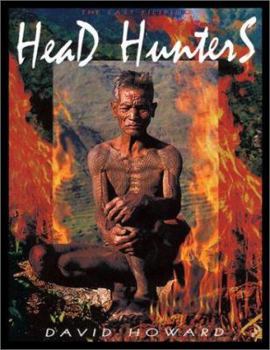The Last Filipino Head Hunters
Illustrated with pictures from the beginning of the 20th century to the present, with a commentary by a visitor who met the last survivors of a now-vanished culture, The Last Filipino Head Hunters... This description may be from another edition of this product.
Format:Paperback
Language:English
ISBN:086719507X
ISBN13:9780867195071
Release Date:January 2001
Publisher:Last Gasp
Length:177 Pages
Weight:1.60 lbs.
Dimensions:0.6" x 8.6" x 11.1"
Customer Reviews
4 ratings
Outstanding Research Book
Published by Thriftbooks.com User , 15 years ago
This book is absolutely outstanding in terms of its research, informational, educational and photographic content. The author went to great lengths to obtain so much info. which is evident in the layout of this book. Recommend.
good book on understudied topic...
Published by Thriftbooks.com User , 18 years ago
excellent read. more of a travel journal than a scientific piece. but still give plenty of ethnographic information. i think the native Filipinos are not studied as much as say the Asmat of New Guinea or the Dyak of Borneo because the Philippines are considered 'modern'. but once you get outside the major cities you are right back in the isolated jungle.
Excellent Photography
Published by Thriftbooks.com User , 20 years ago
The main attraction of this book is the brilliant photography. This was given to me as a birthday present while I was actually in the area covered by the book. I was disappointed that he did not visit the eastern Cordillera Igorots with which I am familiar.Mr. Howard's experiences are amusing and too true to life, but I found some of his conclusions erroneous and he seemed a bit too credulous towards everything he was told. He is obviously an outsider to this culture, and as such the locals tended to embellish a bit, and he bought it all. I am an honorary member of this culture by marriage. Concerning the ages of the interviewees, I highly doubt the statements he documents. This culture had no idea about keeping time until the government required it. I have spent a dozen years trying to forensically figure out the ages of my own father and mother-in-law; and there is considerable doubt about the actual age of my wife, who was born sometime between 1960 and 1965. The only historical benchmark most of these people have is the Japanese occupation during WWII. If the author had done a little more questioning, I'm sure he could have gotten some much better stories. I found some of his observations a bit condescending due to lack of familiarity, for example the reference to "cheap gin" as a medium of exchange. In actual fact the Ginebra San Miguel is a standard social fixture throughout northern Luzon, and normally no gathering of men is without a bottle, but foreign outsiders are rarely party to such gatherings. He draws an incomplete conclusion about the poverty of the Ifugao landholder who couldn't afford to provide a pig for the celebration. I'm sure if he had an honest opinion of some of the more reliable townsfolk, they would have let him know that the this landowner was a worthless drunk who couldn't even manage something as simple as a farm. My in-laws are subsistence farmers in the jungle a dozen miles beyond the road, and they are wealthy enough to have sent 10 kids through college, through raising and selling animals.Nevertheless, this book gives a good insight into the motivations of these people. I more clearly understood the need for tribal war and peace pacts which have given me more than one wrinkled brow since I got married. The narrative is very accurate, just not the conclusions. My own family has a set of the gongs with the human jawbone handles. They claim they are Japanese; I don't know if that's the truth or if they are soft-selling their actual origin to the white cousin to avoid offending me. You won't go wrong with this book.
Excellent reference, moderate print quality
Published by Thriftbooks.com User , 22 years ago
David Howard's photojournalism in "The Last Filipino Head Hunters" does an excellent job of documenting these tribal people and their way of life. Along with photos of their wonderful and often ancient faces, the book captures their jewelry, carvings, fabrics, and tattoos. As tattoo reference, Howard's book stands alone in its thorough photo documentation of many traditional Filipino male and female designs. This tattoo documentation holds special significance as the elders (some over 100 years old) who wear them are beginning to die out. The first person narrative text is fun and informative but a little sparse. It is part history and part travelogue, including wonderful tales of people from the Kalinga and Ifugao tribes. Sadly, the print quality is slightly substandard and some of the photographs are noticeably low in resolution, but the stunning content largely makes up for this.





